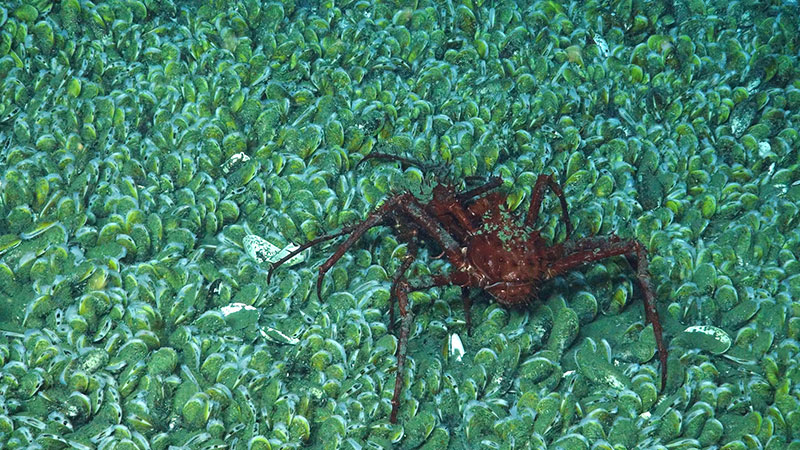September 27, 2020: Crab and Mussels

Image courtesy of Deepwater Canyons 2013 - Pathways to the Abyss, NOAA-OER/BOEM/USGS. Download larger version (jpg, 1.1 MB).
While conducting a seafloor survey along the U.S. East Coast in 2012, the team on NOAA Ship Okeanos Explorer found bubbles coming from the seafloor at a site south and offshore of Norfolk Canyon; they thought these bubbles may indicate a new methane seep site, but they weren’t able to verify this idea. During the Deepwater Canyons 2013 - Pathways to the Abyss expedition, however, scientists deployed a remotely operated vehicle and visually confirmed what the Okeanos Explorer team had suspected, discovering a brand new seep site. In this image, a lithodid crab is seen crawling across a bed of chemosynthetic mussels at the seep site.
From: Discovery of a New Deep Chemosynthetic Community.